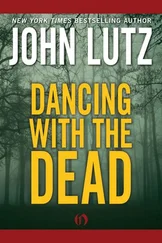John Wohlstetter - Sleepwalking with the Bomb
Здесь есть возможность читать онлайн «John Wohlstetter - Sleepwalking with the Bomb» весь текст электронной книги совершенно бесплатно (целиком полную версию без сокращений). В некоторых случаях можно слушать аудио, скачать через торрент в формате fb2 и присутствует краткое содержание. Город: Seattle, Год выпуска: 2012, ISBN: 2012, Издательство: Discovery Institute Press, Жанр: История, military, Политика, Публицистика, на английском языке. Описание произведения, (предисловие) а так же отзывы посетителей доступны на портале библиотеки ЛибКат.
- Название:Sleepwalking with the Bomb
- Автор:
- Издательство:Discovery Institute Press
- Жанр:
- Год:2012
- Город:Seattle
- ISBN:978-1-93659-906-6
- Рейтинг книги:3 / 5. Голосов: 1
-
Избранное:Добавить в избранное
- Отзывы:
-
Ваша оценка:
- 60
- 1
- 2
- 3
- 4
- 5
Sleepwalking with the Bomb: краткое содержание, описание и аннотация
Предлагаем к чтению аннотацию, описание, краткое содержание или предисловие (зависит от того, что написал сам автор книги «Sleepwalking with the Bomb»). Если вы не нашли необходимую информацию о книге — напишите в комментариях, мы постараемся отыскать её.
RICHARD PERLE, Resident Fellow, American Enterprise Institute and Assistant Secretary of Defense, 1981–1987 Sleepwalking with the Bomb
Sleepwalking with the Bomb — читать онлайн бесплатно полную книгу (весь текст) целиком
Ниже представлен текст книги, разбитый по страницам. Система сохранения места последней прочитанной страницы, позволяет с удобством читать онлайн бесплатно книгу «Sleepwalking with the Bomb», без необходимости каждый раз заново искать на чём Вы остановились. Поставьте закладку, и сможете в любой момент перейти на страницу, на которой закончили чтение.
Интервал:
Закладка:
The calculation of the Reagan administration and allied conservative Democrats—ignoring proliferation was acceptable if it helped to bring down the USSR—was defensible, provided Pakistan could be induced not to proliferate. But Pakistan’s nuclear ascension itself was by then a practical reality, and it had every intention of proliferating. In 1987 Khan publicly admitted that Pakistan already had developed a nuclear weapon capability.
What was not defensible, by contrast, was what happened after the end of the Afghan War in February 1989. The nuclear horses thus had already left the nonproliferation barn. Pakistan had done everything short of exploding an actual nuclear device. However, in 1990 the George H. W. Bush administration teamed up with liberals in both parties in Congress to try to close the proverbial barn door and punish Pakistan for its pursuit of nuclear weapons. President Bush declined to certify that Pakistan was complying with nuclear proliferation safeguards, making the country ineligible to receive military aid from the U.S. And despite harboring several million Afghan War refugees, Pakistan also received no economic aid.
On May 13, 1998, India openly tested a weaponized nuclear war-head. Its Hindu nationalist government made no attempt to call this explosion “peaceful.” Two weeks later, Pakistan showed how close it had been to full nuclear-weapons-club membership, responding with its own tests, one of which employed five separate devices.
The fecklessness of belatedly attempting to stop the unstoppable became abundantly clear after September 11, 2001. The terrorist attacks galvanized America into action against al-Qaeda, and Pakistan’s cooperation was vital in this latest Afghan campaign. But blowback in the form of intense anti-U.S. feeling, most notably in the Pakistani intelligence agency (the Directorate for Inter-Services Intelligence, often just called “ISI”), meant Pakistani cooperation was not forthcoming.
It took Deputy Secretary of State Richard Armitage’s famed dire threat (“We will bomb you back into the Stone Age!”) to get Pakistan to even partially side with America again, after the 9/11 attacks. But Pakistan’s support has never been wholehearted, with elements in the ISI playing on the other side, and the government either unable or unwilling to purge them. When Khan revealed his nuclear proliferation distribution network in 2004, his countrymen treated him as a national hero.
In 2005 President George W. Bush lifted military aid restrictions on Pakistan (and on India, but those restrictions had been imposed by President Clinton after India’s 1998 nuclear tests), but the damage had been done, and more was to follow. The 2011 plan to kill Osama bin Laden in a U.S. raid deep inside Pakistan had to be kept secret from Pakistani officials for fear that Islamists within the Pakistan government would tip off bin Laden. (An August 1998 U.S. cruise missile strike aimed at bin Laden’s Afghan base camp was compromised when Pakistani officials alerted him; bin Laden fled before the missiles completed their two-hour flight to reach their target.) Al-Qaeda sought to acquire Pakistani nuclear bombs from 1998 to 2001. American pressure after the 9/11 attacks short-circuited bin Laden’s plans. The inevitable price of the 2011 raid—though clearly worth paying to get bin Laden—was a further erosion of U.S.-Pakistani relations.
The prospect that an Islamist regime could overthrow Pakistan’s current government—and thus gain control over Pakistan’s burgeoning nuclear arsenal—has reportedly induced the U.S. to develop contingency plans for taking out or seizing Pakistan’s arsenal. But unless the U.S. knows exactly where all Pakistan’s bombs are, such a mission would have no realistic prospect of complete success. Uncertainty is a huge deterrent to U.S. preemptive action.
Danger in Safety, Safety in Danger
OCTOBER 27, 1970 was not a happy day for authorities in Orlando, Florida. Disney World’s opening was a year away, and they found themselves facing a nuclear bomb threat: pay $1 million and guarantee an escort out of the country, or else a hydrogen bomb would be detonated. Looking at a drawing of the device neither the FBI nor the Atomic Energy Commission would give assurance that it could not work. With the city on the verge of paying up, local police found out that the threat was a hoax perpetrated by a 14-year-old high school student.
Nuclear knowledge is now widely enough distributed so as to answer publicly most of the questions scientists had to answer during the Manhattan Project. According to a top U.S. bomb designer, seven of the eight problems scientists then had to solve are now answered in the public record. The eighth element, the right people, the scientists themselves supplied. Even by the time of India’s first bomb (1974), all the complex scientific questions were answered. A nation that could assemble the right personnel and gain access to the right resources would see the rest follow in due course.
As nuclear bomb knowledge spreads in states that might harbor terrorists, we find two fundamental truths about private parties and nuclear proliferation. First: Private parties cannot now create nuclear fuel, nor will they be able to for some time to come. The process of becoming nuclear capable has taken most states more than a decade. Private parties have vastly inferior resources and thus will not manage the huge set of complex tasks needed to produce nuclear fuel from scratch anytime soon. Neither the uranium nor the plutonium route can be taken without industrial-scale processes—thousands of supersonic-speed centrifuges for uranium isotopic separation, or a nuclear reactor and chemical nuclear-waste-separation system for plutonium—to create the fuel.
But there is ongoing research into laser enrichment technology. If its boosters prove correct as to its potential, it may make it possible to enrich uranium without full-size industrial facilities. Proponents claim that facilities one-quarter the size of current plants could be used, making their activities harder to monitor by satellite surveillance. However, even a quarter-size facility is well beyond realistic scale achievable in home garages and backyards.
But any smaller-scale enrichment innovation would be a boon to aspiring nuclear terrorists and their state suppliers. Pending before the Nuclear Regulatory Commission is an application to build a Global Laser Enrichment plant, filed by a consortium of GTE, Japan’s Hitachi, and Cameco, a Canadian uranium mining company. The NRC is expected to rule on the application in 2013. [33] The plant would use an Australian laser enrichment technology called SILEX (separation of isotopes by laser excitation).
The second truth follows from the first: There are only three common ways private parties can obtain nuclear fuel: sale, gift, or theft . [34] More esoteric transactions—lease, sale/leaseback—can be executed. But for practical purposes of policy analysis the three basic types of transactions suffice.
The first two ways involve a nuclear state as voluntary sponsor; the third way involves a state’s gross negligence. No matter how sophisticated, all terror groups seeking to obtain and use nuclear weapons need state help. An effective counter-proliferation policy must target nuclear states as top priority.
But what of the “dirty bomb” or “radiological device”—a conventional explosive laced with radioactive material? Couldn’t a private party throw that together without help from a state? Because a nuclear explosion is not involved, a potential dirty-bomb maker can select elements that are both easier to obtain and have more rapid rates of decay than uranium or plutonium.
Every radioactive element has an average half-life, the time span in which half its atoms will decay. An atom decays when its nucleus spontaneously emits radiation (often transmuting the atom into a new element). Early researchers named this nuclear radiation using the first three letters of the Greek alphabet: 1. alpha particles , composed of two protons and two neutrons, are the most dangerous form of radiation, but can be stopped by a sheet of paper or clothing; 2. beta particles , electrons, which can be stopped by a sheet of aluminum; and 3. gamma rays , which cause radiation sickness and are only attenuated by a much thicker shield, like a centimeter of lead. [35] Note that two of the most dangerous forms of radiation do not come from radioactive decay: free neutrons, the most harmful and hard-to-stop form of nuclear radiation, come from fission or fusion, and X-rays come from high-energy electrons—including those of beta rays “braking” as they pass near a heavy nucleus.
Интервал:
Закладка:
Похожие книги на «Sleepwalking with the Bomb»
Представляем Вашему вниманию похожие книги на «Sleepwalking with the Bomb» списком для выбора. Мы отобрали схожую по названию и смыслу литературу в надежде предоставить читателям больше вариантов отыскать новые, интересные, ещё непрочитанные произведения.
Обсуждение, отзывы о книге «Sleepwalking with the Bomb» и просто собственные мнения читателей. Оставьте ваши комментарии, напишите, что Вы думаете о произведении, его смысле или главных героях. Укажите что конкретно понравилось, а что нет, и почему Вы так считаете.












